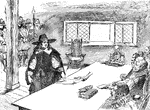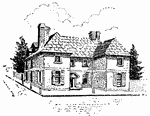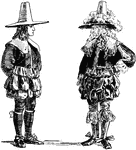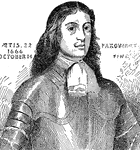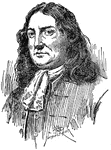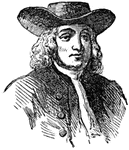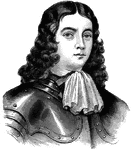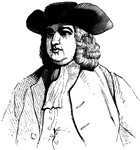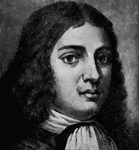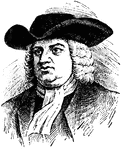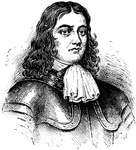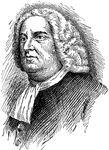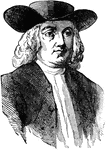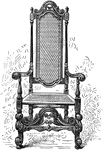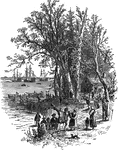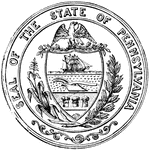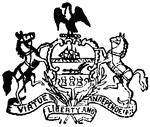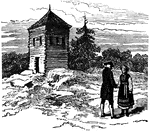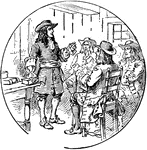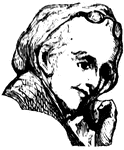The Pennsylvania ClipArt gallery includes 130 illustrations related to the Keystone State.
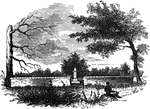
Paoli Monument
The Battle of Paoli (also known as the Battle of Paoli Tavern or the Paoli Massacre) was a battle in…

Paper Money, Eight Shillings Bill, 1777
Eight Shillings Bill (8 shillings) Pennsylvania currency from 1777. Frame, arms and value printed in…
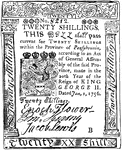
Paper Money, Twenty Shillings Bill, 1756
Twenty Shillings Bill (20 shillings) Pennsylvania currency from 1756. Image is the Coat of Arms of William…

Penn's seal and signature
"Penn's Seal and Signature. This is a representation of the seal and signature of William Penn attached…

Penn's Treaty with the Native Americans under the Elm Tree at Shackamaxon
Penn's Treaty with the Native Americans under the Elm Tree at Shackamaxon
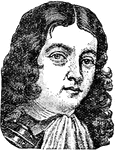
William Penn
The founder of the colony of Pennsylvania, born in London, England, Oct. 14, 1644; died at Ruscombe,…
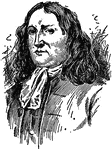
William Penn
(1644-1718) "The founder of the state of Pennsylvania, and the most widely-known member of the Quakers."…

William Penn
William Penn (October 14, 1644 – July 30, 1718) was founder and "Absolute Proprietor" of the Province…
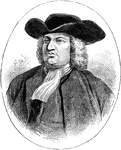
William Penn
(1644-1718) William Penn was an English colonist and best known as founder of Pennsylvania.
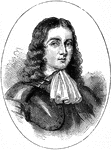
William Penn
William Penn (October 14, 1644 – July 30, 1718) was founder and "Absolute Proprietor" of the Province…

William Penn Purchasing Land from the Delaware Indians
He befriended the local Indians, and ensured that they were paid fairly for their lands. They revered…

Pennsylvania Seal
Seal of the commonwealth of Pennsylvania, 1876, showing Pennsylvania as a cornerstone. Motto: Virtue,…
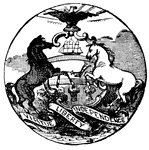
Pennsylvania Seal
Seal of the commonwealth of Pennsylvania, 1904. Motto: Virtue, Liberty, Independence.
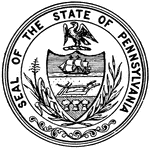
Seal of Pennsylvania
The Seal of the State of Pennsylvania. The seal shows a shield which has a ship, a plow, and sheaves…

Invasion of Pennsylvania
"The invasion of Pennsylvania- working on the fortifications near Harrisburg, Pa., June 16th, 1863.…
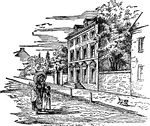
The President's House in Philadelphia (1794)
This house, located on the 500 block of Market Street, served as the executive mansion of the United…

Joseph Reed
(1741-1785) Pennsylvania statesman who served as president of the Continental Congress 1777-1778. Reed…
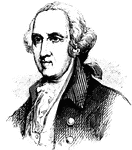
James Rivington
(1724-1803) British publisher who emigrated in 1760 to Philadelphia and founded the New York Gazette.…

Room in which Congress met in Carpenters' Hall
Carpenters' Hall is a four-story brick building in Center City Philadelphia, Pennsylvania which played…
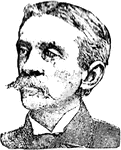
Francis Stockton
A novelist, born in Philadelphia, Penn., April 5, 1834; died in Washington, D. C., April 20, 1902.
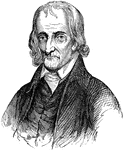
Charles Thomson
Charles Thomson (November 29, 1729 – August 16, 1824) was a Patriot leader in Philadelphia during…
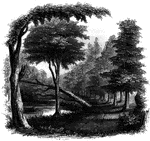
Toby's Eddy
View near Toby's Eddy. The Moravians had established six missionary settlements in the vicinity of the…
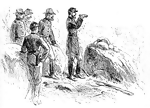
Little Round Top
A war council at the top of Little Round Top in Gettysburg, Pennsylvania. It was the site where the…
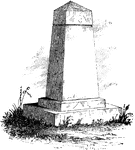
Treaty Monument
"Treaty Monument. This monument stands near the intersection of Hanover and Beach Streets, Kensington,…

William Penn's Treaty with the Native Americans
An illustration of the treaty between the Native Americans and William Penn.

Triumphal Arch for the Reception of General Washington
A triumphal arch is a structure in the shape of a monumental archway, in theory built to celebrate a…
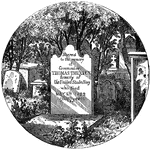
Thomas Truxtun's Grave
Thomas Truxtun (February 17, 1755 – May 5, 1822) was an American naval officer who rose to the rank…

Washington's Headquarters at Valley Forge
The headquarters in Valley Forge of General George Washington during the American Revolution.
